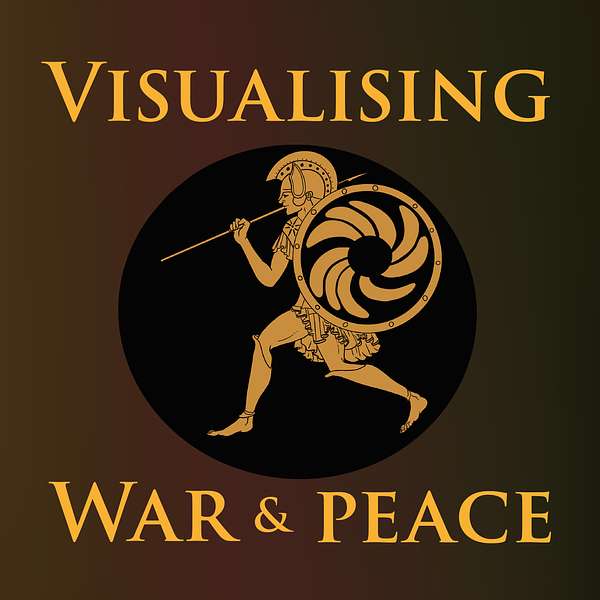
Visualising War and Peace
How do war stories work? And what do they do to us? Join University of St Andrews historian Alice König and colleagues as they explore how war and peace get presented in art, text, film and music. With the help of expert guests, they unpick conflict stories from all sorts of different periods and places. And they ask how the tales we tell and the pictures we paint of peace and war influence us as individuals and shape the societies we live in.
Visualising War and Peace
Anatomy of a Soldier with author and artist Harry Parker
In this week's episode, Alice and Nicolas interview Harry Parker, an artist, former army officer, and author of Anatomy of a Soldier - a creative and powerful novel that narrates the experiences of fictional soldier Tom Barnes as he deploys to war and gets badly injured by an IED. Harry was himself injured by an IED while on tour in Afghanistan, losing both legs, and in many ways the novel draws on his personal experiences. But as Harry explains, it is also a highly fictionalised account and he takes advantage of that fictional element to look at war from many different perspectives.
Each of the 45 chapters in the novel is narrated by an inanimate object - a tourniquet, a bag of fertiliser, a boot, a flag, a running blade, and so on - and these objects enable Harry to dissect war from all sorts of angles, bringing in the experience of civilians as well as soldiers, family members as well as fighters, and people on both sides of the conflict. As he explains in the podcast, he is fascinated by the fact that no one experiences conflict in the same way. The novel's structure and form also enable Harry to highlight connections between people who are fighting each other, and this reflects his wider interest in countering the more one-sided or biased representations of conflict which we often come across. Although the novel does move forward in time, from Tom Barnes' injury in the first chapter to his recovery and reintegration into civilian life at the end, it also jumps back and forth, capturing how fractured people's experiences of war are - and this got us talking about writing itself and the novel as a narrative form that can be used in innovative ways to help people visualise war.
Among other questions, we asked Harry:
- How does writing compare with, e.g., painting as a narrative medium when it comes to representing war?
- To what extent does Anatomy of a Soldier reflect his own experiences of war and injury, and why did he decide to write fiction rather than autobiography?
- Why did he decide to narrate the story through a series of inanimate objects and not a human character?
- How does the novel's rapid changes of perspectives and jumping backwards-and-forwards in time contribute to its depiction of war?
- What does he want the novel to communicate to readers about soldiering, combat and war?
We hope you enjoy the episode!
For a version of our podcast with close captions, please use this link. You can find out more about Harry's writing and artwork by visiting his website.
For more information about individuals and their projects, access to resources and more, please have a look on the University of St Andrews Visualising War website.
Music composed by Jonathan Young
Sound mixing by Zofia Guertin